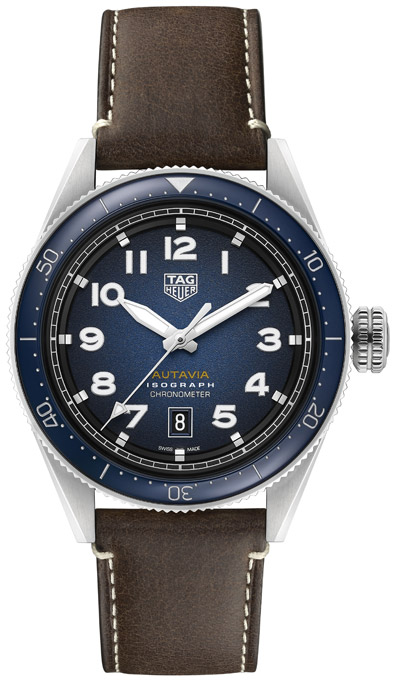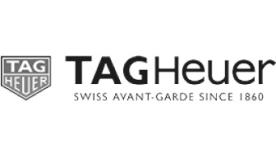You might recall that the legendary TAG Heuer Autavia made its comeback at Baselworld two years ago after an original “crowdsourcing” campaign in which fans were asked to choose between two different vintage-inspired models over a number of rounds until only one model was left. The reference 2446 Mark 3 “Rindt” was the winner and duly went into production as part of the brand’s Heritage collection.
For Baselworld 2019, TAG Heuer presents a brand-new three-hand version that uses all the classic Autavia codes with the vintage appeal of a smoked blue dial and brown calfskin leather strap. There are, however, a number of things that stand out with this new watch. The first is undoubtedly the numerals on the dial. You won’t find any numerals on the dials in the TAG Heuer Aquaracer and Monaco collections, for instance, which makes their appearance on this dial all the more unusual. Furthermore, in the rare cases when you do find them on TAG Heuer models, in the Carrera and Formula 1 collections, they have a more modern square typeface, rather than the rounded edges seen here. The second thing that leaps out when you look at this watch is the oversized crown, which is inspired by the brand’s sports timers.

But the most significant story behind this new watch is indicated by two words that have been discreetly added to the dial. The first speaks for itself: chronometer. The second, “Isograph”, explains the first and is the result of yet another cutting-edge development from the LVMH Lab that is responsible for research and development at the group’s watch brands. Isograph, from the Greek “iso” (equal) and “graph” (write) has been trademarked and refers to the stable and consistent performance of the movement that is inside this watch.
Calibre 5 is nothing new to TAG Heuer fans, yet the version inside this new Autavia is. It uses the revolutionary new carbon composite balance spring that was first seen in the TAG Heuer Carrera Calibre Heuer 02T Tourbillon Nanograph presented earlier this year but is presented now in a humble everyday timepiece. The name is warranted, since these springs are isochronous for up to 90% of their entire power reserve, unlike most mechanical watches, where the balance amplitude drops after 24 hours, compromising the watch’s accuracy.
As far as in-house developments go, few other revolutions in watchmaking are as in-house as this one. Guy Semon himself, the CEO of the LVMH Lab, developed the algorithm used to produce these springs. The Lab also worked on the development of the machines used to produce them (there are only two in the world, which were made in La Chaux-de-Fonds, and they are both in Guy Semon’s office). The springs are actually grown on a silicon wafer as carbon nanotubes. At a certain point in the process, the mixture of gases used is changed, which excites the carbon molecules, causing amorphous carbon to plug the holes in the nanotubes. There are, therefore, effectively two types of carbon in the spring, which is why it is referred to as a carbon composite.
The carbon-composite spring has a number of advantages. Above all it is produced in one piece (300 are grown on each silicon wafer) with the terminal curve preformed and the collet included. It is one-third of the weight of a silicon balance spring and can be adapted to any balance wheel. There is even the potential for “plug and play” applications that would allow it to be used in third-party movements.
Perhaps the best thing about the TAG Heuer Autavia Isograph, however, is its price. This chronometer-certified revolutionary new technology is available for just 3,500 Swiss francs.




